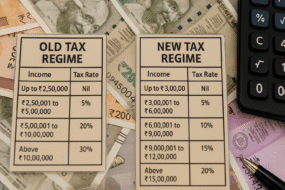India’s Digital Currency Shift: A Silent Financial Revolution in the Making
Some of the most significant changes in finance don’t come with front-page headlines — they happen through behavioural shifts and infrastructure rewiring. India is currently witnessing one such transformation with the advent of digital currency. It’s quiet, steady, and yet profoundly revolutionary.
At the heart of this movement is a new sovereign, programmable, digital form of money — the Digital Rupee. It’s more than a new payment method; it’s a reinvention of what money means in the Indian economy.
📲 UPI: The Foundation Layer of Digital Finance
India’s journey began with the success of Unified Payments Interface (UPI). From just 1,252 crore transactions in FY20, UPI’s usage skyrocketed to 18,587 crore transactions in FY25, with transaction value crossing ₹260 lakh crore.
What UPI achieved wasn’t just convenience — it fundamentally reshaped how every Indian, from roadside vendors to salaried professionals, viewed and used money. It normalized instant, real-time payments using nothing more than a QR code.
💸 Enter the Digital Rupee: India’s CBDC
The Reserve Bank of India launched its wholesale CBDC pilot in November 2022, followed by the retail version in December. What started as an experiment has grown into a national-scale operation.
- By December 2023, retail CBDC transactions exceeded 1 million per day
- By March 2025, digital Rupees worth ₹1,016 crore were in active circulation
- Over 60 lakh users and 17 banks including MobiKwik, CRED, and Yes Bank have joined the ecosystem
This isn’t just a wallet update. It’s a state-backed, programmable digital currency — a version of cash with built-in logic that can define where, when, or how it can be used.
🧠 Smart Currency, Smarter Governance
An early showcase of CBDC’s potential was Odisha’s Subhadra Yojana (launched in Sept 2024), where ₹10,000 in digital Rupees was directly transferred to 12,000 women — with zero delays, no middlemen, and full transparency.
This was more than efficient welfare. It was a working model of digitally accountable governance. With CBDCs, public funds can be tracked, targeted, and trusted — transforming how subsidies, scholarships, and aid are delivered.
🌐 Building India’s Monetary Future
India is not just innovating internally. It’s testing offline payments, interbank CBDC settlements, and cross-border digital currency frameworks with nations like the UAE and ASEAN partners.
Globally, over 130 countries are exploring central bank digital currencies. India is already operational, testing real-world use cases and laying the groundwork for global interoperability.
💼 What This Means for Investors and Businesses
The shift toward a sovereign digital currency will:
- Transform how companies handle payments and accounting
- Challenge legacy fintechs while opening doors for new ones
- Modernize banking, compliance, and financial operations
CBDC is not a feature upgrade. It’s a paradigm shift. The logic of money is changing at its core — and so will everything built on top of it.
🔍 Final Thoughts: The Quiet Redesign of Money
India’s digital Rupee is more than a financial tool. It’s a strategic evolution of the monetary system, affecting policy, markets, and citizen engagement.
For investors, ignoring this change could mean missing the foundations of tomorrow’s financial infrastructure. But those who understand its trajectory will be well-positioned to ride the wave of the future of finance.
















